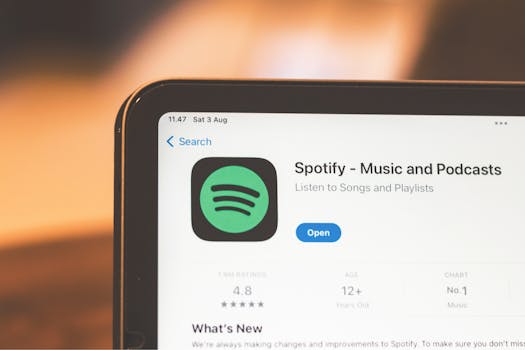Productivity
Expense Tracker Apps That Keep Your Budget Organized
Get organized with expense tracker apps. Learn simple habits, setup tips, and collaborative features to master your budget while boosting daily productivity.
Advertisement
Grabbing a receipt from last week’s coffee run, only to forget where it went, feels familiar to many. For people juggling several expenses, expense tracker apps streamline budgeting into a few taps, keeping priorities in sight and chaos at bay.
Managing money shouldn’t feel burdensome or mysterious. Budgeting ties into daily productivity by reducing distractions, giving you confidence to focus on work, creative projects, or family, all thanks to expense tracker apps providing clarity and control.
This guide unpacks simple steps, practical examples, and tried-and-true techniques for using expense tracker apps to level up your budget—no guesswork involved. Ready to organize your days and dollars? Let’s dig in.
Building Consistent Habits: Daily Expense Logging Routines That Stick
By following a clear habit-building roadmap, you’ll enter purchases into your expense tracker apps daily—before details slip away. Consistency frees up mental bandwidth for priorities beyond receipts.
A great routine blends convenience, reminders, and tangible benefits. Automate as much as you can, but keep touchpoints visible—so recording expenses becomes second nature rather than a forgotten task late at night.
Stacking Reminders with Real Life Cues
Pair expense tracker apps with activities you do every day—like after lunch or when emails are cleared. This stacks new habits onto existing ones, making them nearly automatic.
For example, after grabbing a takeout lunch, open your app and log the amount before tossing the receipt. If your phone calendar pings at 5 p.m., check your transactions while the reminder is top of mind.
Consistency starts with small, repeatable triggers. Eventually, your expense tracker apps prompt you just by seeing your phone after a purchase—no extra thought required.
Using Templates for Fast Entry
Some expense tracker apps offer reusable transaction templates. Enter common items—like “Coffee $5 – Groceries $50″—in one tap. Templates speed up the process and reduce the friction of repeated manual entry.
If you routinely visit certain stores, set up categories and tags that auto-populate when selected. Future entries take seconds, not minutes, encouraging persistence through hectic work weeks or travel days.
Templates complement reminders, ensuring every routine purchase is logged without extra typing. Save your energy for bigger decisions by automating the mundane parts.
| Habit Stacking Trigger | App Feature Used | Outcome | Action Step |
|---|---|---|---|
| After morning coffee | Quick Add button | Fresh entries never forgotten | Tap add after last sip |
| On your commute | Voice-to-Text entry | No manual typing required | Speak your transaction aloud |
| Before bed | End-of-day reminder | No receipts left unlogged | Schedule daily alert |
| Weekly grocery run | Expense template | Quick input for repeat items | Use a saved template |
| When reviewing emails | Auto-import receipts | Seamless online purchase tracking | Enable inbox scan |
Setting Realistic Budgets: Flexible Categories and Custom Alerts
Aligning your app’s categories with your real-life spending brings clarity and reduces budgeting stress. Expense tracker apps let you personalize categories so every transaction fits neatly, preventing confusion later.
Enable custom alerts when you near spending limits. These subtle nudges help course-correct quickly—right as decisions matter—without waiting until month’s end.
Using Category Tweaks to Reflect Actual Habits
Open your app, review default categories, and ask: “Would I ever say I spent $60 on Miscellaneous?” Rename or merge vague labels to fit phrases you genuinely use, like “Streaming” or “Family Meals.” Categorizing realistically makes reviewing reports intuitive.
Split transactions that cover several budget areas. If your grocery receipt includes snacks and personal care items, assign portions to each relevant category, so you avoid guesswork and maintain accuracy.
- Rename broad categories like “Entertainment” to specific ones, such as “Movies” or “Sports,” so you know exactly what you spent on leisure.
- Set up a “Work Expenses” category if you reimburse or claim business-related spending and track it for tax purposes.
- Turn on category-specific alerts that ping only when certain budgets get tight, reducing alert fatigue as you shop.
- Create yearly expense categories for infrequent items—like “Car Maintenance”—to avoid missing large, irregular purchases in monthly totals.
- Regularly audit categories, merging those you never use and splitting overstuffed ones to reveal hidden spending patterns.
Spending time on these customizations pays off when you review trends or share reports with a partner or accountant. Clarity now beats confusion later.
Crafting Effective Alerts for Real-Time Spending Control
Custom alerts work like lane markers on a road—gently guiding you without abrupt stops. Set alerts for big spending milestones: 80 percent of the category, for example, so you can pause and rethink if needed.
If you share budgets with someone, add shared alerts or notifications. When both partners get pinged after hitting set limits, you’re less likely to overspend or forget to communicate—a small step for team accountability.
- Set a daily spending cap alert to avoid surprises from many small, impulsive purchases throughout the week.
- Use “low funds” warnings tied to your checking account balance, so transfers and bill payments never bounce unexpectedly.
- Automate bill reminders for irregular items, like annual subscriptions, ensuring annual charges don’t throw off monthly totals.
- Adjust alert thresholds seasonally; higher around holidays, lower during quiet months to keep your plan realistic.
- Enable location-based alerts so if you enter a store where you overspend, your app nudges you gently before checkout.
These alert strategies anchor your self-control, so you adjust before breaking your rules, not after. Relying on smart cues turns budgeting from a guessing game into an active strategy.
Visualizing Trends: Leveraging App Reports to Uncover Hidden Patterns
Reviewing visual reports in your expense tracker apps uncovers subtle spending trends that aren’t obvious from raw numbers alone. Pie charts, line graphs, and heat maps provide rapid feedback on budget health and progress.
Seeing “Dining” steadily climbing while “Utilities” stays flat reveals habits that spreadsheets miss. Apps translate transactions into meaning, making action easier when the time comes.
Making Sense of Monthly Reports
Each month, review your summary graphs. A line rising on “Coffee Shops” may prompt you to tweak your morning route or try home brewing. If bar charts show groceries rising, you might meal-plan or swap brands.
Copy this routine: On the last Sunday of the month, open your app, read each category trend, and jot down one sentence: “Next month, I’ll skip Friday lunches out.” Small adjustments become habits faster than blanket bans.
Expense tracker apps turn data into stories—a growing slice for streaming says “Family movie night got pricier.” Stories create real change when you swap guesswork for knowledge you can act on immediately.
Comparing Category Breakdowns Over Time
Set two months side by side—color-coded bar charts make it easy. If you notice “Travel” dipping while “Takeout” jumps, it highlights lifestyle shifts worth discussing with family or roommates.
Schedule a quarterly review to zoom out: catch creeping habits or spot places where you’ve improved. Share insights with partners or friends in a quick voice memo: “Vacation fund grew $200 faster—let’s keep it up!”
App breakdowns guide future choices, like increasing your “Savings” category limit after meeting a milestone. This visual feedback encourages forward action, not just reflection.
Collaborating and Sharing: Group Budgets Without the Stress
When multiple people contribute, expense tracker apps offer shared workspaces that let everyone log purchases as they happen. This cuts confusion and debate—everyone stays updated instantly.
Group budgeting builds trust through transparency. If five friends plan a trip, joint budgets and real-time expense logs show who paid for gas, meals, and tickets, reducing future misunderstandings.
Assigning Roles for Smooth Cooperation
Assign clear roles like “Primary Reviewer” or “Item Checker.” The former tracks overall spend, while the latter confirms receipt uploads or note details each night. This process mirrors a team huddle, ensuring no detail slips through.
Send gentle reminders: “Can you upload your receipts from today’s dinner by bedtime?” People appreciate clarity and will adapt quickly. Using predictable scripts—free from blame—makes teamwork routine and encourages accountability.
Expense tracker apps with team features encourage short, direct updates: “Taxi logged, $12, Friday, Shared Transport category.” Everyone knows what’s documented and what needs attention next.
Regularly Reviewing Group Spending Progress
End each week with a five-minute group review. Open the shared report, noting wins: “Stayed $40 under budget on snacks.” Discuss overruns factually: “Drinks higher—let’s agree to cap bar tabs next time.” This prevents avoidable surprises.
Use shared chat spaces in the app, so side comments and questions about receipts don’t clog up your main group chat. “Did anyone pick up the tip at lunch?” clears confusion instantly, making the app a living ledger.
Quick weekly check-ins turn group budgeting from a chore into a team habit—everyone is equipped to keep things running smoothly, even after busy weekends.
Streamlining Receipts and Documentation with Smart Features
Expense tracker apps with built-in scanning, auto-import, and cloud recovery keep documentation organized so receipts and statements are always within reach if needed later—no paperwork pileups required.
Imagine scanning a lunch receipt on the spot; the app digitizes and tags it, turning hours of year-end sorting into seconds. Automation keeps records detailed and stress-free.
Connecting Banking and Card Accounts for Auto-Logging
Link major checking and credit cards directly to your app dashboard. Purchases and deposits chart themselves—no missed transactions or double entries. Automated imports mean your end-of-week review happens in minutes, not hours, every Sunday night.
When accounts sync, redundancy drops, manual errors decrease, and you save mental energy for actual budget decisions—not busywork. This setup is a game-changer after payday or when handling a sudden bill.
If you split accounts for work and home, most expense tracker apps let you choose which gets imported and which stays private, keeping your records clean and separate.
Storing Receipts in the Cloud for Security
Take photos of physical receipts, storing them in a searchable archive linked to each transaction. If you’re ever audited, receipts are a tap away—no hunting through drawers.
Tag digital files with notes like “Lunch with Smith, client intro.” Details stick when captured on the spot, not a week later. Digital records feel effortless compared to tracking fading paper slips.
Cloud storage guarantees retrieval even if your phone is lost. Updates sync across devices, so workflows remain seamless, whether you’re at your desk or on the go.
Integrating Expense Tracking Into Your Productivity Workflow
Embedding expense tracker apps into your wider productivity setup cuts wasted time and prevents context-switching. You keep work, money, and planning tools in one rhythm—so nothing gets lost between them.
A few integrations turn budgets from an “extra step” into an automatic part of each day. Smart syncing makes expense tracking feel less like a chore and more like a built-in system for making better choices.
Routine Budget Reviews During Weekly Planning
At your weekly planning session—often on Sunday night—add five minutes to scan your app summary, check for overspending, and adjust next week’s budget. Write down a quick target: “Cut $20 from dining out.” This step closes the loop efficiently.
By pairing budget and task review, you avoid surprises; if bills are due, they show up alongside work deadlines. This gives you control, not last-minute panic.
Logging new expenses right after finishing your meeting notes links financial accountability with productivity, keeping you focused on tasks—not on untangling mystery charges later.
Automatically Exporting Reports for Tax or Team Use
Export monthly or quarterly reports as PDFs or spreadsheets with a couple taps. Share files with your accountant or collaborators—no fuss. This turns expense reviews into a task as easy as forwarding a document.
If you use project management apps or digital calendars, set up automated exports or calendar reminders when a report is due. This workflow ties your finances to your deadlines seamlessly.
With exports, you’re not scrambling during tax season or when submitting reimbursements. Preparation happens in the background, making you look organized and proactive.
Finishing Strong: Expense Tracker Apps Elevate Productivity and Confidence
Combining practical strategies and powerful app features, you tame spending habits and unearth productivity by automating, syncing, and sharing financial data—freeing your mind to focus on what really matters.
The organized workflows supported by modern expense tracker apps let you spend less time worrying about receipts or budgets, and more energy on meaningful work, family, or creative pursuits.
Start with one technique today—habit stacking or custom alerts—and watch how quickly organization turns into extra hours for the things you truly value. That’s productivity you can see, every day.
Trending Topics

Free Workout Planners for Home Fitness Goals
Reach fitness goals faster using free workout planners that personalize exercises and fit perfectly into your schedule.
Keep ReadingYou may also like

How to Build a Morning Routine Using Your Phone
Build your best morning routine using phone apps that boost motivation, organization, and positivity from the moment you wake.
Keep Reading


